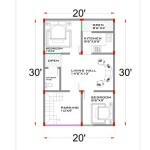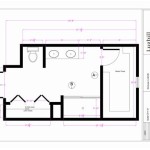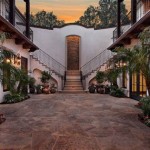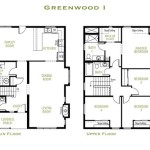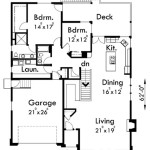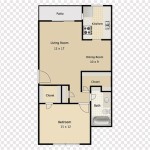Mid-Century Modern House Plans: A Vintage Architectural Treasure
Mid-Century Modern architecture, a style prevalent from roughly the mid-1940s to the 1960s, continues to captivate homeowners and architectural enthusiasts alike. The enduring appeal lies in its clean lines, functional layouts, and embrace of natural light. For those seeking to build or renovate a home with this classic aesthetic, access to vintage Mid-Century Modern house plans offers a unique opportunity to capture the authenticity and charm of the era.
Vintage house plans are architectural drawings that were originally created and used during the Mid-Century Modern period. They represent the design sensibilities, construction techniques, and material preferences of the time. These plans can range from simple, single-story ranch houses to more complex, multi-level structures with innovative features. They provide a tangible connection to the past and offer valuable insights into the architectural thinking of the period.
Sourcing vintage Mid-Century Modern house plans requires dedication and research. Several avenues can be explored, including architectural archives, historical societies, estate sales, and online marketplaces specializing in vintage documents. It is crucial to verify the authenticity and completeness of the plans before acquiring them. Working with an experienced architect or architectural historian can be invaluable in interpreting and adapting the plans for modern construction standards and individual needs.
Key Features of Mid-Century Modern House Plans
Mid-Century Modern house plans are characterized by several distinctive features that contribute to their unique aesthetic and functionality. Understanding these key elements is essential for identifying and appreciating the value of vintage plans.
One of the most prominent features is the emphasis on open floor plans. Walls are minimized to create a sense of spaciousness and connection between living areas. The kitchen, dining area, and living room often flow seamlessly into one another, fostering a more social and interactive living environment. This open layout also allows for better distribution of natural light throughout the home.
Large windows and expansive glass walls are another defining characteristic. These features are strategically placed to maximize natural light and provide panoramic views of the surrounding landscape. The use of glass blurs the boundaries between the interior and exterior, creating a sense of connection with nature. Clerestory windows, positioned high on walls, are often incorporated to further enhance natural light penetration.
Clean lines and geometric shapes are fundamental to the Mid-Century Modern aesthetic. Rooflines are typically low-pitched or flat, with overhanging eaves that provide shade and protection from the elements. The exterior often features simple, unadorned surfaces, with an emphasis on horizontal lines. Rectangular and square shapes are common, adding to the overall sense of order and simplicity.
The use of natural materials is also prevalent in Mid-Century Modern architecture. Wood, stone, and brick are frequently incorporated into both the interior and exterior design. Wood paneling, exposed brick walls, and stone fireplaces add warmth and texture to the living spaces. These materials are often left in their natural state, showcasing their inherent beauty and durability.
Finally, attention to detail and a focus on functionality are hallmarks of Mid-Century Modern design. Built-in storage solutions, such as shelving units and cabinets, are common features, maximizing space and minimizing clutter. The placement of doors, windows, and fixtures is carefully considered to optimize usability and flow. Every element of the design is intended to serve a purpose, contributing to the overall efficiency and livability of the home.
Benefits of Using Vintage Mid-Century Modern House Plans
Choosing to use vintage Mid-Century Modern house plans offers a range of advantages for those seeking to build or renovate a home in this style. These benefits extend beyond mere aesthetics and encompass aspects of authenticity, historical accuracy, and design inspiration.
Authenticity is a primary benefit. Vintage plans provide a direct link to the original design intentions of the architects who shaped the Mid-Century Modern movement. They capture the nuances and subtleties of the style that may be lost in modern interpretations. By adhering to the original plans, homeowners can recreate the authentic feel and character of a Mid-Century Modern home.
Historical accuracy is another significant advantage. Vintage plans offer a wealth of information about the construction techniques, materials, and detailing that were prevalent during the Mid-Century Modern period. This knowledge is invaluable for ensuring that the renovation or construction project is historically accurate and consistent with the original design intent. It also allows for the preservation of architectural heritage and the celebration of a significant era in design history.
Design inspiration is a further benefit. Vintage plans can serve as a rich source of inspiration for architects, designers, and homeowners. They offer a glimpse into the innovative thinking and creative solutions that characterized the Mid-Century Modern movement. By studying these plans, individuals can gain a deeper understanding of the design principles and apply them to their own projects, creating unique and personalized spaces that reflect the spirit of the era.
Cost-effectiveness can sometimes be a factor. While the initial acquisition of vintage plans might involve some expense, they can potentially save money in the long run by providing detailed specifications and minimizing the need for extensive redesign or improvisation. The clarity and precision of the plans can also reduce the risk of errors and delays during the construction or renovation process.
Preservation of architectural history is an ethical consideration. By utilizing and preserving these vintage plans, one contributes to the architectural heritage of the period. These plans are valuable historical documents that provide insight into past construction methods and design sensibilities. Their proper storage and use ensure that future generations can appreciate the architectural creativity of the Mid-Century Modern era.
Challenges and Considerations When Using Vintage Plans
While using vintage Mid-Century Modern house plans offers numerous benefits, it is crucial to acknowledge and address the challenges and considerations that may arise during the process. These challenges can range from adapting the plans to modern building codes to addressing potential material availability issues.
Adapting to modern building codes is a primary consideration. Building codes have evolved significantly since the Mid-Century Modern period, reflecting advancements in safety, energy efficiency, and accessibility. Vintage plans may not comply with current regulations and may need to be modified to meet these standards. This adaptation process requires careful planning and collaboration with an experienced architect or building code specialist.
Material availability can also pose a challenge. Certain materials used in the original construction may no longer be readily available or may have been replaced by more modern alternatives. In such cases, it may be necessary to substitute materials while maintaining the overall aesthetic and performance of the design. Careful research and consultation with material suppliers can help identify suitable replacements.
Structural integrity should be thoroughly assessed. Vintage plans may not always provide detailed information about structural engineering aspects, particularly in areas such as foundation design or load-bearing walls. It is essential to have a structural engineer review the plans and ensure that the building is structurally sound and meets current safety standards. Additional reinforcement or modifications may be required.
Accessibility considerations are important to evaluate. Modern accessibility standards require features such as ramps, wider doorways, and accessible bathrooms to accommodate individuals with disabilities. Vintage plans may not incorporate these features and may need to be modified to ensure compliance with accessibility regulations. This can involve significant alterations to the layout and design of the home.
Energy efficiency is another crucial consideration. Mid-Century Modern homes were often built with limited insulation and single-pane windows, resulting in poor energy performance. Upgrading the insulation, windows, and HVAC systems is essential to improve energy efficiency and reduce utility costs. This can involve significant investments but will result in long-term savings and a more comfortable living environment.
Finally, the condition of the vintage plans themselves should be assessed. Old plans may be faded, damaged, or incomplete. It is essential to have the plans professionally restored or digitized to ensure their legibility and preservation. In some cases, missing information may need to be reconstructed or inferred based on available documentation and historical research.

Untitled Modern Floor Plans Mid Century House

Untitled Mid Century Modern House Plans Floor

Nps Plan Belville 1952 Mid Century Modern House Plans

See 125 Vintage 60s Home Plans Used To Design Build Millions Of Mid Century Houses Across America Americana

Vintage House Plans 1153 1960s Modern Floor

84 Original Retro Midcentury House Plans That You Can Still Buy Today Renovation

Untitled Modern Floor Plans Vintage House Mid Century

Mid Century Modern Homes Sgf

55 Mcm Vintage House Plans Ebook Instant Digital

Build A House With These Mid Century Modern Floor Plans Blog Eplans Com


